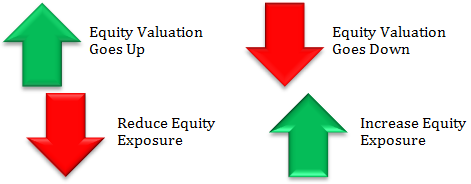
 +91-22-48913909
+91-22-48913909
Table of Contents
Mutual Funds Advantages and Disadvantages
Mutual Fund is a collected pool of money from numerous people who share the common objective of trading in shares and Bonds. The Mutual Funds then invest this money across various financial instruments based on its stated objectives. The trading cost in case of Mutual Fund is low as they transact in higher volumes. Before Investing in any investment avenue, individuals always like to understand its advantages and disadvantages. Similarly, Mutual Funds too have their own set of advantages and disadvantages. So, let us have a look at the advantages and disadvantages of Mutual Funds through this article.
Talk to our investment specialist
Advantages of Mutual Funds
Some of the major advantages of Mutual Funds are listed below:
Variety of Schemes
There are various categories of Mutual Fund schemes designed by the fund houses to cater the diverse requirements of the individuals. The broad categories of Mutual Fund schemes consist of Equity Funds, Debt fund, and Hybrid Fund. These schemes differ in terms of risk & return, tenure of investment, Underlying Portfolio composition, and so on. Based on these parameters, individuals who are risk-averse can choose to invest in debt funds while risk-seeking individuals can choose to invest in equity funds. Hybrid funds can be chosen by risk-neutral individuals.
Diversification
The portfolio of a Mutual Fund consists of a number of shares, bonds and various other financial instruments. As a consequence, individuals can diversify their holdings across various instruments, just by investing in a Mutual Fund scheme. In addition, individuals can also diversify their holdings across various Mutual Fund schemes. For instance, individuals who have high risk-appetite can choose to invest major proportion of their holdings in equity funds for instance 60% of their total investments and the remaining in debt. On the contrary, risk-averse individuals would choose to invest a major portion, for instance 70%, of their investments in equity. Thus, individuals can diversify their holdings as per their requirements.
Invest in Small Amounts
Individuals can invest in Mutual Funds through SIP or Systematic Investment plan. SIP is a mode of investment in Mutual Funds wherein; individuals need to invest small amounts at regular intervals. Through SIP, individuals try to attain various objectives such as purchasing a house, purchasing a vehicle, Retirement planning, and so on. Therefore, SIP is also known as a goal-based investment. Individuals can start investing in Mutual Funds with a minimum investment of as low as INR 500.
Professionally Managed
Mutual Fund schemes are managed by qualified professional experts. The credentials of these fund managers are verified before inducting them. These individuals know where to invest the money so that they can earn maximum returns. In addition, these Mutual Funds are well-regulated. They need to publish their reports at regular intervals so that the investors can understand how the Mutual Fund scheme has been performing. Also, they are monitored by various regulatory authorities.
Liquidity
Mutual Funds offer liquidity which means individuals can withdraw their money easily from Mutual Funds at any time as per their convenience. In certain Mutual Fund schemes, especially some of the Liquid Fund schemes, individuals can get their money credited into the Bank account within 30 minutes of placing the order. In other schemes, the Redemption takes place as per the prescribed guidelines. Therefore, the level of liquidity is high in case of Mutual Funds.
Ease of Access
Investment in Mutual Funds can be done through various channels such as through Mutual Fund distributors, the fund house, brokers, and various other agencies. However, it is convenient to go through distributors since individuals can find a number of schemes offered by different fund houses under one roof. In addition, these brokers do offer an online mode of investment through which individuals can invest as per their convenience from anywhere and at any time. Moreover, they do not charge any fees from the clients.
After understanding the various pros of Mutual Funds, now, let us have a glance at some of the cons of Mutual Funds. These pointers are listed below as follows.
Disadvantages of Mutual Funds
Like advantages, Mutual Funds too has its own set of disadvantages. These limitations are as follows:
Returns are Not Guaranteed
The returns on Mutual Funds not guaranteed. This is because every instrument forming part of the portfolio does carry a certain element of risk. Therefore, the degree of risk is higher in certain instruments while it is lower in others. In addition, the returns of the Mutual Funds are Market-linked. Therefore, the returns on Mutual Funds are not guaranteed. However, if the equity funds are held for a longer tenure then the probability of risk reduces. Even, by investing through SIP mode, individuals do not risk their entire stake. As a consequence, individuals can earn maximum possible returns through these techniques.
Expense Ratio
In case of Mutual Funds, the costs associated with it also plays an important role in determining the profit. If the expenses associated are higher, it would eat away a pie’s share of the profit. Therefore, individuals should check the expense ratio before investing in any of the Mutual Fund so that even if they earn good profits yet they do not receive much in hand.
Lock-in Period
Certain Mutual Funds such as close-ended ones and ELSS have a lock-in period during which individuals cannot redeem their money. In other words, their money in such investments gets blocked. Therefore, individuals should be careful of considering the lock-in period otherwise, they wouldn’t be able to access money when required. However, the brighter side of ELSS is individuals can claim tax deductions of up to INR 1,50,000 under Section 80C of income tax Act, 1961.
Thus, from the above pointers, it can be said that Mutual Funds have their own advantages as well as limitations.
How to Select Best Mutual Funds?
- Step1: Describe Your Investment Objective: Individuals first need to describe their investment objective before investing in a Mutual Fund scheme. Here, they should also define their expected returns on the investment, tenure of the investment, risk-appetite and other related factors. This will help them to select the type of scheme that suits their requirements.
- Step2: Analyze the Mutual Fund Ratings: After choosing the type of Mutual Fund that suits the requirements, the next step is to examine the mutual fund ratings. In this stage, individuals need to verify the scheme’s previous performance, its AUM, the portfolio composition, fund age, exit load and other factors.
- Step3: Research the AMC: The next step is to research on the AMC. In this step, individuals need to check the credentials of the AMC and the fund manager managing the Mutual Fund scheme. Research on the AMC is important because it is the AMC that manages the Mutual Fund scheme.
- Step4: Monitor Your Investments: This is the last step where individuals need to monitor their investments regularly. If required they can also rebalance their portfolio to earn maximum possible returns.
Top 5 Mutual Funds
Based on the above parameters some of the Top 5 Mutual Funds under equity category are listed below as follows:
Fund NAV Net Assets (Cr) 3 MO (%) 6 MO (%) 1 YR (%) 3 YR (%) 5 YR (%) 2024 (%) Invesco India PSU Equity Fund Growth ₹65.88
↓ -0.21 ₹1,394 19.1 13.2 -6 38.5 29.7 25.6 SBI PSU Fund Growth ₹32.3962
↓ -0.17 ₹5,259 12.8 8.6 -4.9 37.3 30.5 23.5 Nippon India Power and Infra Fund Growth ₹354.13
↓ -0.55 ₹7,417 17.4 5.3 -6.6 35.3 32.4 26.9 ICICI Prudential Infrastructure Fund Growth ₹199.16
↓ -0.45 ₹7,920 17.1 9.5 2.7 34.9 36.9 27.4 HDFC Infrastructure Fund Growth ₹48.328
↑ 0.01 ₹2,540 15.2 7.3 -2.3 34.5 34.4 23 Note: Returns up to 1 year are on absolute basis & more than 1 year are on CAGR basis. as on 9 Jul 25 Assets >= 200 Crore & Sorted on 3 year CAGR Returns.
Thus, after looking at the various pointers it can be said that Mutual Funds can be chosen as one of investment option. However, individuals should understand the functioning of a scheme completely before investing in it. Moreover, they should check whether the scheme suits their requirements or not. If required, individuals can even consult a financial advisor. This will help them to understand that their investment is safe and their objectives are attained in time.
All efforts have been made to ensure the information provided here is accurate. However, no guarantees are made regarding correctness of data. Please verify with scheme information document before making any investment.










